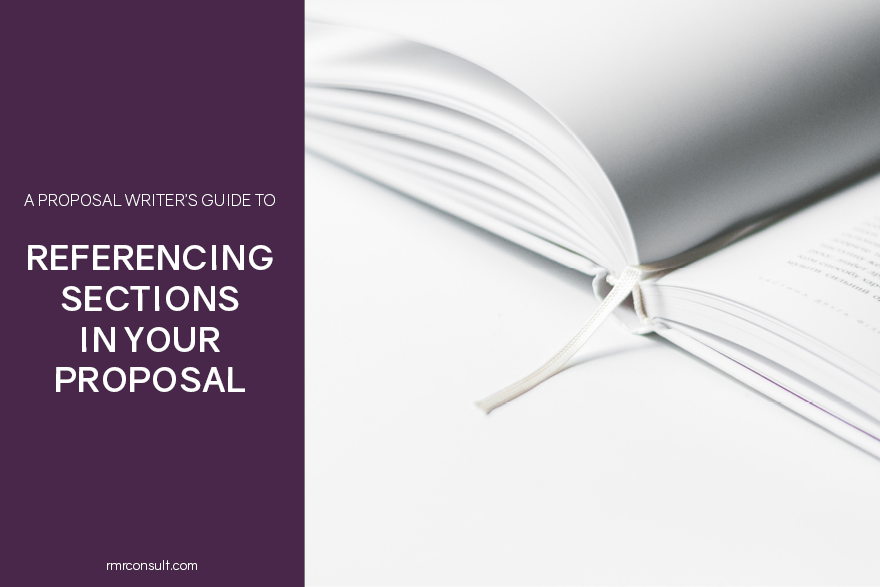Referencing Sections in Your Proposal
Have you ever read through an RFP and thought, ‘did they just ask for our experience three times in three different sections?’ if so, you’re not alone. Many requests for proposals appear to duplicate questions or ask for the same information in multiple sections. What do you do in this situation? There are a few schools of thought on this particular issue (aren’t there always?) The first is to fully respond to each question in every section, even if it’s repetitive. Points are points, after all. The other solution is to refer back to previous sections. For instance, if you’ve already included full resumes in Section 1, you simply say ‘please see resumes’ in response to the team qualifications question in Section 4. Today’s post is about the latter school of thought.
Should you reference sections in your proposal? Well…
Yes and no.
The Downside to Referencing Sections in Your Proposal
When you write a proposal, you want to connect with the review committee as much as possible. Part of this connection comes in removing barriers to communication. These barriers can manifest in difficult to understand language, off-topic win themes, and they can also be physical. Referencing sections in your proposal could be considered a physical barrier to communication because you are asking the reviewer to physically flip back to a section to score the current section. Doesn’t sound like a whole lot of effort, right?
You’re not wrong – physically flipping a few pages probably doesn’t even burn a full calorie. That’s not the point, though. Your reviewer most likely has a stack of proposals to go through, and they’re not going to spend extra time flipping back and forth through yours. What’s more likely to happen is that they’ll try and remember what was in the previous section for a minute or two and base their scoring off of whatever impression they have. Worst case, they dock you all of those points because you didn’t adequately respond to the questions in this section.
The Upside to Referencing Sections in Your Proposal
If the RFP has a strict page limit, then referencing previous content can be a convenient way to save valuable page space. There are other ways to maximize the use of the pages you have, though, so be sure to try those first before you rely on referencing sections in your proposal.
What’s the Answer?
Ah, yes, you probably noticed that I have not given a definitive answer to the question of whether or not you should reference sections in your proposal. As with most questions regarding proposals, the answer here is that it depends. The better you know the client, the more accurately you can gauge how much of a barrier referencing sections in your proposal will be. If you aren’t sure how the client will react to this solution, consider the following:
Clarify the RFP Requirements
If you’re confident the RFP is asking for the same content twice (or more) ask for clarification. It is possible that one of the questions is an error and will get thrown out. If it isn’t an error of duplication, then referencing a previous section is probably not a good solution because the client clearly expects to see different information. If this is the case, ask if the client will provide more specifics about what is expected in each section so you can respond accurately.
(Not sure how to request clarification on an RFP? Try reading the guide to navigating convoluted RFPs here.)
Compromise
If the client doesn’t provide clarification on the differences between sections, or if their clarifications still aren’t clear, try to compromise. For instance, if full resumes are requested in one section, but another asks for team member experience, you could try providing brief team member information (like name/role/education/licensing/short qualification statement) and then provide a note referring the reviewer to the full resume for more detailed information.
How to Correctly Reference Sections in Your Proposal
If you absolutely must reference back to another section (for instance, if you’re working within a strict page limit), make it as easy as possible for the reviewer. Include the tab/section, page number, heading – whatever it takes to quickly get them to the correct page and location with the information you want them to see. If you simply say “please see resumes,” then they have to remember where those resumes started. Keep in mind that you’re creating a barrier, and you want it to be as small as possible so the reviewer can hop over it, rather than needing to hurdle over it (which they won’t do.)






Leave A Comment